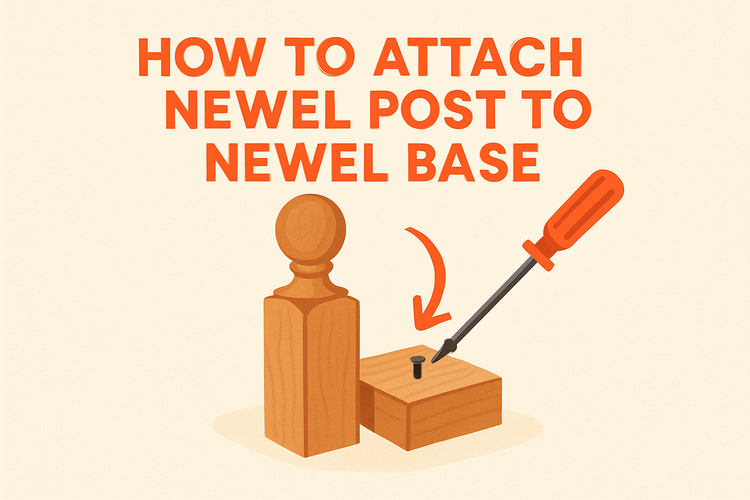How To Attach Newel Post To Newel Base

Understanding the Role of the Newel Post and Base
The newel post serves as a primary support structure in a staircase, anchoring handrails and adding stability. It's typically connected to a newel base, ensuring strength and alignment for the overall framework.
This foundational connection can bear significant weight and tension, especially when situated at the bottom or midpoint of a staircase. For maximum safety and aesthetic value, precise installation is crucial. Using durable components like a post base ensures the newel post remains upright and secure over time.
Preparing the Surface and Positioning
Before beginning the attachment process, it's vital to prepare a clean, level surface for both the newel base and the post itself. Any waviness or inconsistencies on the floor or stair tread may affect the stability of the final structure.
Place the newel base where you want the newel post to be installed. Make sure to double-check alignment with the staircase and pre-drill any necessary holes. Mark the location clearly before proceeding to ensure accuracy throughout the process.
A leveled and centered post will prevent future movement caused by foot traffic or handrail pressure. You can also consider reinforcing the surrounding area with angle brackets to provide additional side support, particularly on open staircases.
Securing the Base to the Structure
Once the position is finalized, the newel base must be attached firmly to the subfloor or stair tread using heavy-duty screws or bolts. For wooden stairs, high-quality screws and nails provide a reliable grip into the surrounding timber.
If working with concrete or another masonry surface, consider using a combination of masonry anchors and post base fixings. These provide a stable anchor point to which the newel post can be fastened.
Ensure the base is perfectly square and does not shift. Even the slightest tilt can result in future misalignment or instability. Some installations also benefit from incorporating angle brackets around the perimeter of the base to hold it firmly in place.
Attaching the Newel Post to the Base
With the base secured, it's time to install the actual newel post. Most posts come with pre-drilled holes or dowel systems that align with the corresponding base point. Carefully lower the post into the base, ensuring it sits flush and upright.
Use lag bolts or suitable fasteners from the screws and nails category to attach the post securely. You may need to tighten bolts several times during the process to guarantee a secure fit. As a further reinforcement, especially on open-riser stairs, angle brackets can be used to hold the post from multiple sides, increasing rigidity.
Finishing Touches and Long-Term Maintenance
The post is now in place, but a few final details help ensure durability and aesthetic appeal. Apply wood filler over any visible screws or fasteners, then sand smooth before painting or staining. This will help the post blend beautifully with the surrounding stairwork.
Periodically inspect the newel post for any signs of loosening or wear. Vibrations from foot traffic and seasonal wood movement can impact the joint integrity over time. Tightening screws or adding a new post base if necessary will extend the life of the staircase. Maintaining these supports is essential not just for appearance, but also for the safety of those using the stairs daily.
